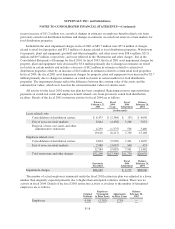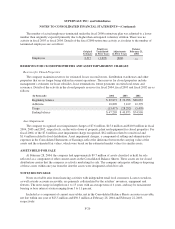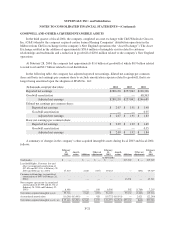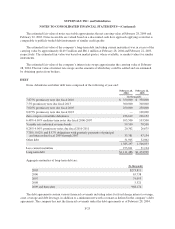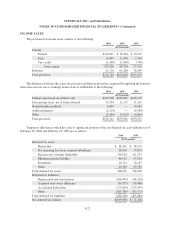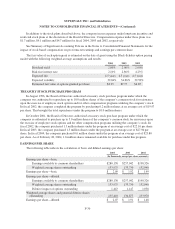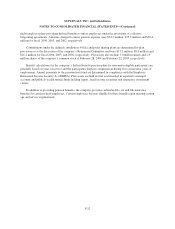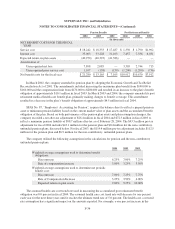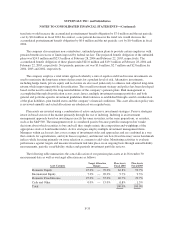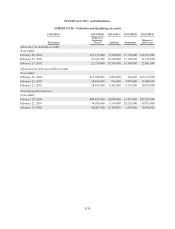Albertsons 2004 Annual Report Download - page 75
Download and view the complete annual report
Please find page 75 of the 2004 Albertsons annual report below. You can navigate through the pages in the report by either clicking on the pages listed below, or by using the keyword search tool below to find specific information within the annual report.
SUPERVALU INC. and Subsidiaries
NOTES TO CONSOLIDATED FINANCIAL STATEMENTS—(Continued)
The company currently has net operating loss (NOL) carryforwards from acquired companies of $ 75.9
million for tax purposes, which expire beginning in 2007 and continuing through 2018.
Based on management’s assessment, it is more likely than not that all of the deferred tax assets will be
realized; therefore, no valuation allowance is considered necessary.
ACCUMULATED OTHER COMPREHENSIVE LOSSES
The accumulated balances, net of deferred taxes, for each classification of accumulated other
comprehensive losses are as follows:
Derivative Financial
Instrument-
Unrealized Loss
Minimum Pension
Liability Adjustment
Accumulated Other
Comprehensive Losses
(In thousands)
Balances at February 22, 2003 $(6,735) $(72,328) $(79,063)
Minimum pension liability — (26,404) (26,404)
Amortization of loss on derivative
financial instrument (including
impact of debt redemption) 6,735 — 6,735
Balances at February 28, 2004 $ — $(98,732) $(98,732)
On February 25, 2001, due to the implementation of SFAS 133, “Accounting for Derivative Instruments and
Hedging Activities”, the company’s existing interest rate swap agreements were recorded at fair market value in
the company’s Consolidated Balance Sheets. On July 6, 2001, the two swaps were terminated and the remaining
fair market value adjustments, which were offsetting, were being amortized over the original term of the hedge.
In conjunction with the company’s early redemption of its $100 million 8.875% Notes due 2022 in fiscal 2004,
the remaining fair market value adjustments of the two terminated swaps relating to these notes were recognized
as interest expense in fiscal 2004. There was no net impact to the Consolidated Statement of Earnings for fiscal
2004 as the two terminated swaps were offsetting.
STOCK OPTION PLANS
The company’s 2002 and SUPERVALU/Richfood 1996 stock option plans allow the granting of non-
qualified stock options and incentive stock options to purchase shares of the company’s common stock, to
salaried employees at prices not less than 100 percent of their fair market value, determined based on the average
of the opening and closing sale price of a share on the date of grant. The company’s 1997 stock plan allows only
the granting of non-qualified stock options to purchase common shares to salaried employees at fair market value
determined on the same basis. In April 2002, the Board of Directors reserved an additional 3.8 million shares for
issuance under the 1997 plan. The company also has options outstanding under its 1983 and 1993 plans, but no
further options may be granted under these plans. The plans provide that the Board of Directors or the Executive
Personnel and Compensation Committee of the Board (the “Committee”) may determine at the time of granting
whether each option granted, except those granted under the 1997 plan, will be a non-qualified or incentive stock
option under the Internal Revenue Code. The terms of each option will be determined by the Board of Directors
or the Committee, but shall not be for more than 10 years from the date of grant, generally with a vesting period
of zero to four years. Options may be exercised in installments or otherwise, as the Board of Directors or the
Committee, may determine.
F-28


